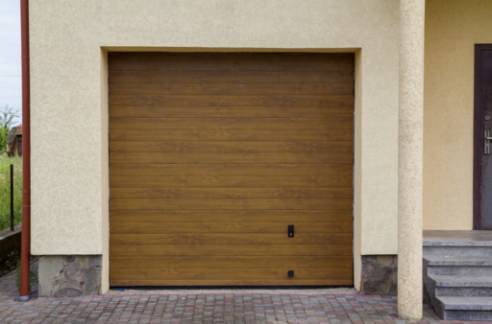Save Time and Money: DIY Garage Door Spring Replacement Made Easy
22 November 2025 by Cohen B.Garage door spring replacement is a common maintenance task for homeowners, and doing it yourself can save time and money. Understanding the different types of springs and the necessary tools, as well as taking essential safety precautions, is key to a successful DIY project. In this article, we will walk you through the steps to replace both torsion and extension springs, ensuring your garage door operates smoothly and safely. Additionally, we'll provide maintenance tips to prolong spring life and troubleshoot common problems that may arise after installation. With the right knowledge and preparation, DIY garage door spring replacement can be made easy.

Understanding Garage Door Spring Replacement
Garage door spring replacement is a crucial maintenance task for any homeowner with a garage. The springs are responsible for counterbalancing the weight of the garage door, making it easy to open and close. Over time, these springs can wear out or break, causing the door to become difficult to operate. Understanding the process of garage door spring replacement is essential for ensuring the safety and functionality of your garage door. Whether you have torsion springs or extension springs, knowing when and how to replace them is important for any DIY enthusiast. This article will provide a comprehensive guide to garage door spring replacement, including the essential tools and safety precautions, step-by-step instructions, maintenance tips, and troubleshooting common problems.Essential Tools and Safety Precautions for DIY Projects
When embarking on a DIY garage door spring replacement project, it is crucial to have the right tools and take necessary safety precautions to ensure a successful and injury-free experience. Essential tools for this project include winding bars, vice grips, a socket set, a ladder, and safety goggles. Additionally, it is important to follow safety precautions such as wearing gloves, making sure the door is properly secured, and being cautious of the high tension of the springs. These tools and safety measures will help ensure a smooth and safe DIY garage door spring replacement process.Steps to Replace Torsion Springs and Extension Springs
When it comes to replacing torsion springs and extension springs on your garage door, it's important to follow the proper steps to ensure the job is done safely and effectively. Here are the steps to replace these springs:1. Gather the necessary tools and materials, including winding bars, a socket wrench, and new springs.
2. Ensure the garage door is closed and disconnect the opener from the door.
3. Use a winding bar to unwind and release the tension on the existing springs, being mindful of the potential for the springs to snap.
4. Once the tension is released, carefully remove the old springs and install the new ones, making sure they are properly aligned and secured.
5. Use the winding bars to wind the new springs and apply the appropriate amount of tension, following the manufacturer's guidelines.
6. Reconnect the garage door opener and test the door to ensure it opens and closes smoothly. By following these steps, you can safely and effectively replace torsion springs and extension springs on your garage door, saving time and money on professional installation.
Fine-Tuning Tension and Testing the Garage Door
This step is crucial as it will determine the balance and stability of the garage door, preventing any potential issues in the future. To fine-tune the tension, start by lifting the door halfway and releasing it. The door should stay in place if the tension is properly adjusted. If the door moves up or down, it indicates that the tension needs to be adjusted. This can be done by adjusting the tension rods on the spring system. Once the tension is properly adjusted, it is important to test the garage door to ensure that it opens and closes smoothly. Check for any unusual noises or jerky movements, as these may indicate that the tension needs further adjustment. Testing the garage door also involves checking the balance of the door. This can be done by disconnecting the garage door opener and manually lifting the door to see if it moves smoothly and stays in place. By fine-tuning the tension and testing the garage door, you can ensure that the spring replacement has been successful and that your garage door is operating efficiently.Maintenance Tips to Prolong Spring Life and Avoid Future Issues
Proper maintenance of your garage door springs is essential to prolong their life and prevent future issues. Here are a few tips to help you maintain your garage door springs:1. Regular lubrication: It is important to regularly lubricate the garage door springs to keep them operating smoothly. Use a high-quality garage door lubricant and apply it to the springs and other moving parts of the door.
2. Inspect for wear and tear: Periodically inspect the garage door springs for any signs of wear and tear. Look for any cracks, rust, or fraying of the coils. If you notice any damage, it is important to replace the springs immediately to prevent further issues.
3. Balance the door: An unbalanced garage door can put unnecessary strain on the springs, leading to premature wear. Use a level to check the balance of the door and make any necessary adjustments to ensure it is properly balanced.
4. Test the door regularly: Test the garage door regularly to make sure it is operating smoothly. Listen for any unusual sounds or jerky movements that could indicate a problem with the springs.
5. Hire a professional for maintenance: While DIY projects can save time and money, it is important to hire a professional for regular maintenance of your garage door springs. A professional can inspect and service the springs to ensure they are in good working condition. By following these maintenance tips, you can prolong the life of your garage door springs and avoid future issues. Regular maintenance will help keep your garage door operating smoothly and prevent costly repairs in the future.